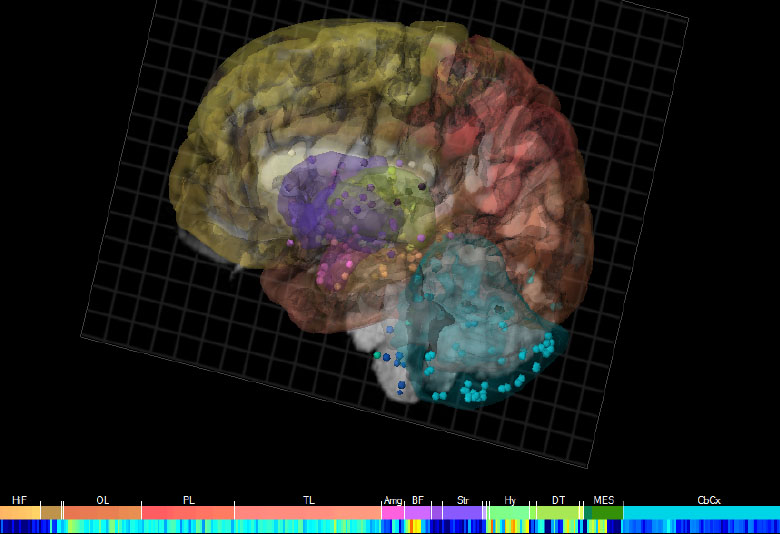By Helen Figueira
September 20, 2016
Time to read: 3 minutes
A team at the MRC Clinical Sciences Centre (CSC), based at Imperial College London, has found an important part of the machinery that switches on a gene which may protect against Alzheimer’s Disease.

Working in collaboration with scientists at the Hong Kong University (HKU) and the Erasmus University in Rotterdam, CSC associate professor Richard Festenstein explored the steps by which this Neuroglobin gene is gradually switched on, or up-regulated.
Neuroglobin has previously been shown to protect against Alzheimer’s disease in mice in which it makes the protective Neuroglobin. It is thought that the gene might play a protective role early in the disease in patients, but appears to be down-regulated as the disease progresses. It may therefore prove useful in developing new ways to try to prevent or treat this common cause of dementia, for which there is currently no cure.
Professor Festenstein and Dr Tan-Un from HKU, with help from Professor Sjaak Phillipsen at the Erasmus University, examined how the Neuroglobin gene ‘folds up’ in the cell using a technique called chromosome conformation capture. In results published today in the journal Nucleic Acids Research, they showed that a particular region of DNA, outside the coding region of the Neuroglobin gene itself, loops round to make contact with the start of the gene.
They tested the ability of this newly-identified DNA region to switch on the Neuroglobin gene using two approaches. First, they linked the DNA region directly to another so-called ‘reporter’ gene, and demonstrated simply that it does indeed act as an up-regulator. Second, they used the new ‘Crispr’ technique of gene editing to completely remove this section of DNA from the cell, and showed that the Neuroglobin gene was no longer switched on.
Together, the results gave the team confidence that this newly-identified DNA region is indeed a powerful switching mechanism of the Neuroglobin gene.
As Neuroglobin is thought to be protective in Alzheimer’s, it may be possible in the future to use this ‘switch’ in developing new treatments, such as gene therapy. Such therapeutic approaches require a compact ‘chunk’ of DNA to be most efficient. Importantly, the team pinpointed the position of the new regulatory region, and found that it is some distance away from the Neuroglobin gene itself. It may now be possible to remove the less relevant sections of DNA in between the Neuroglobin gene and its regulator to create an efficient therapeutic gene therapy unit. It may be that this target may prove useful not only in Alzheimer’s but also in other neurodegenerative diseases.
Abstract:
http://nar.oxfordjournals.org/cgi/content/abstract/gkw820?
ijkey=31B1YuRC1FiEtc3&keytype=ref
Full Text:
http://nar.oxfordjournal s.org/cgi/content/full/gkw820?
ijkey=31B1YuRC1FiEtc3&keytype=ref
PDF:
http://nar.oxfordjournals.org/cgi/reprint/gkw820?
ijkey=31B1YuRC1FiEtc3&keytype=ref
Contact
Susan Watts
Head of Communications and Public Engagement
MRC Clinical Sciences Centre